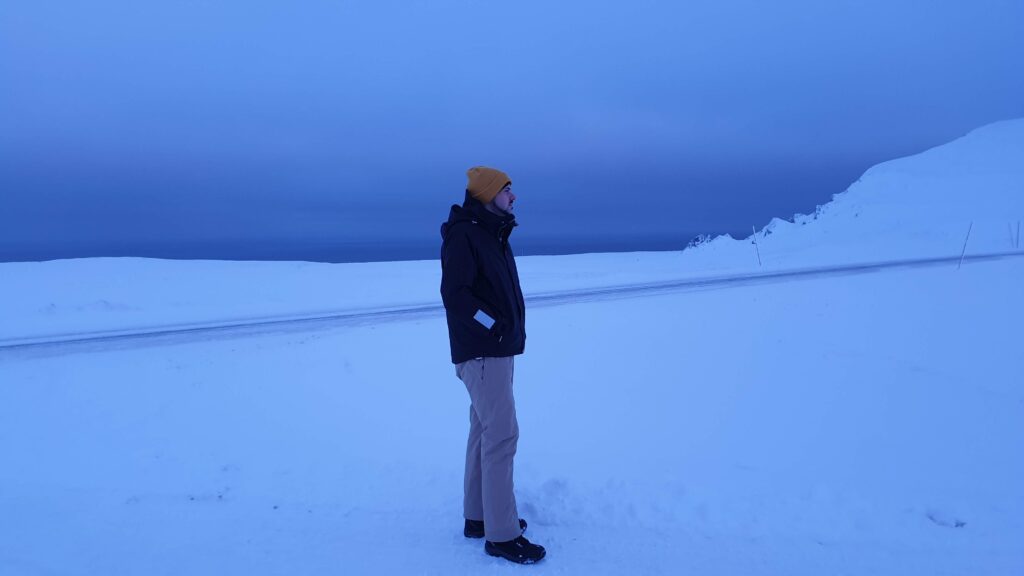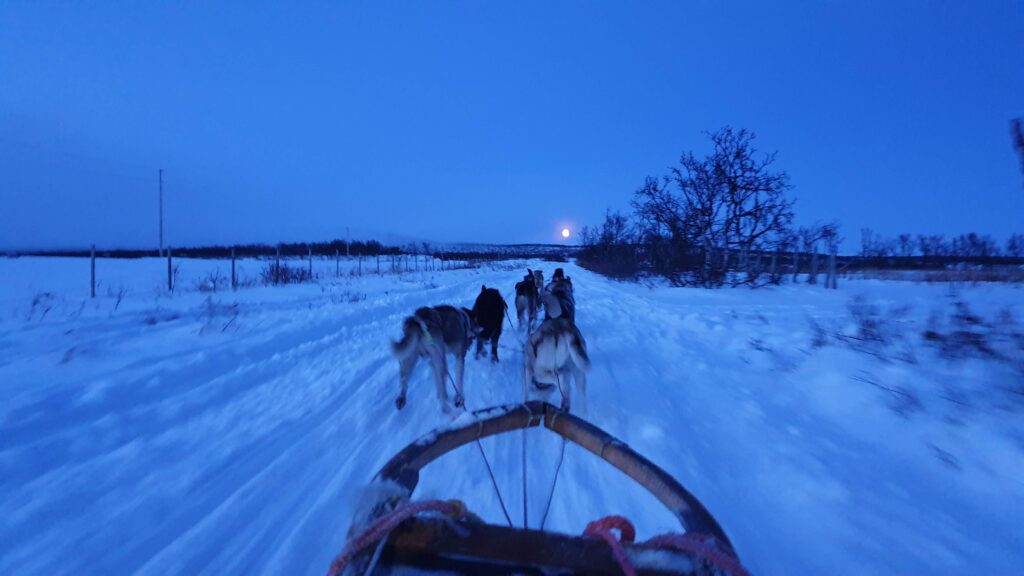This period of the year means the beginning of the end of the Polar Night for regions in the Arctic. The polar night in Vadsø will end on the 17 of January, when the Sun will rise for the first time this year in the Arctic sky, for only 50 minutes. After this date, each day will mean the Sun will come out higher and higher in the sky and for longer periods. And this until May 17, when the Sun will never set for almost 2 months, marking the beginning of the Polar Day.
But what is the polar night?
Earth carries out two types of rotations: one around the Sun, during the course of a year, and the second around its own axis, during 24 hours. At the same time, Earth is inclined in respect with the Sun, at an angle of approximately 23°, and remains tilted at this angle during the whole year.
This means that the Earth is illuminated by the Sun differently during one year. At and around the winter solstice (sometime around 22nd December each year), Earth is inclined in such a way that the North Pole and the region around the North Pole, points away from the Sun, meaning it is not illuminated by our star, which translates into a continuous night – phenomenon which we call the Polar Night.
Just take a look at the first part of this video from the California Academy of Sciences, and see how Earth is illuminated by the Sun during a whole year.
You can see that the length of the polar night varies in function of latitude: closer you are to the North Pole, longer the polar night is. At the exact location of the North Pole, the polar night lasts no less than 6 months! At lower latitudes, but still above the Arctic Circle, the Sun never rises for shorter periods. The shortest polar night occurs on regions exactly on the Polar Circle (at 66°N), where the Sun never rises for only 1 day, which is exactly the day of the Winter Solstice!
Moreover, in function of latitude, the Polar Night may be experienced differently, concerning the position of the Sun below the horizon. This means that during the polar night, closer to the Arctic Circle, the Sun will still be near the horizon (but still below it) during the normal “day” hours. Which means that twilight occurs – thus indirect light from the Sun beautifully illuminates these regions, and you are able to see the landscape and the surroundings. And it does it in a surreal blue lighting – which is what the amazing polar blue is! Vadsø in Northern Norway experiences this phenomenon during the whole period of the polar night.


Further up from the Arctic Circle, the Sun does not have time to get so close to the horizon, which means that no indirect light will illuminate these regions at all, which leads to a 24-hour long pitch-black night, which can last for months!
And the best part about the Polar Night? You can see the Northern Lights even during the “daytime”!
Regions below the Polar Circle experience a normal day/night cycle, which varies also in length, in function of the exact latitude.

